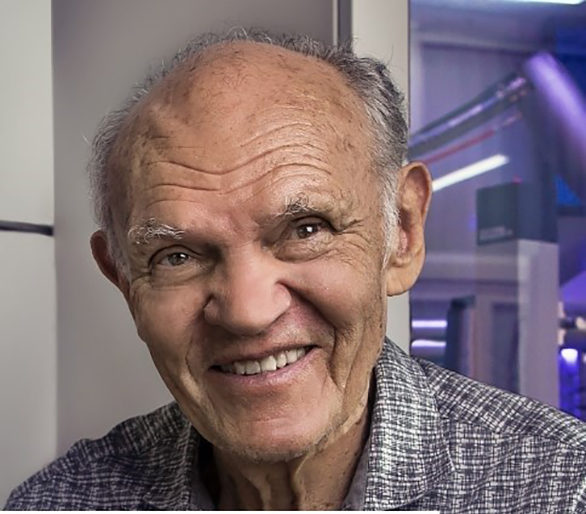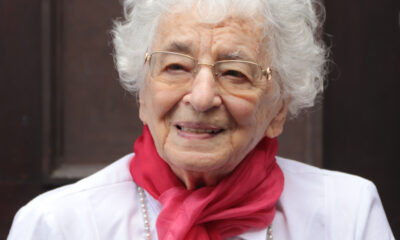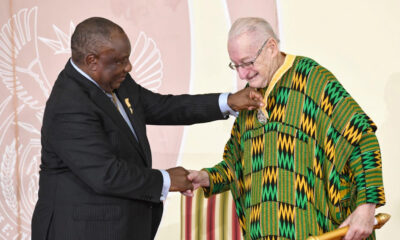
Lifestyle

SA-born chemist wins Wolf Prize for scientific breakthrough
Professor Leslie Leiserowitz, who grew up in Johannesburg, studied in Cape Town, and settled in Israel, was recently awarded the Wolf Prize in Chemistry 2021 together with Bulgarian-born scientist Professor Meir Lahav.
The Wolf Prize is owned by Israel and is an international award honouring scientists and artists “for their achievements in the interest of mankind and friendly relations among peoples”. Wolf Prizes in physics and chemistry are considered the most prestigious awards in those fields after the Nobel Prize.
They have been awarded by the Wolf Foundation since 1978, and come with $100 000 (R1.4m) in prize money. The awards were announced during a live broadcast from the official residence of Israeli President Reuven Rivlin on 9 February 2021.
While he has reached the stratosphere of academic achievement, Leiserowitz describes a humble, happy childhood in Johannesburg, where he was born in 1934.
Speaking to the SA Jewish Report from Israel, he says, “I was brought up in Johannesburg and went to Athlone High School. I spent my youth roaming the streets of the city with my lifelong friend, Solly Cope. We tried to earn money raising chickens. The neighbours, however, complained about the stench, so we transferred the chickens to a farm near Heidelberg.”
His family moved to the Mother City when he finished high school. “I studied electrical engineering at the University of Cape Town (UCT), but didn’t find gainful employment as an engineer. I worked for the South African Railways, but it was a dead-end job which I left after a few months.”
He was then unemployed for a long stretch of time, “and so spent my days on Table Mountain and started reading books about crystals and science. I was attracted to the atomic symmetry patterns in crystals, since they reminded me of the fabric patterns on dresses. My mother was a dressmaker.”
“I decided to return to UCT to do an MSc in the physics department, where Professor RW James had taught physics. I loved his way of thinking and writing on crystals and the scattering of X-rays by crystals.”
Leiserowitz decided to settle in Israel in 1959 because “from early youth, I had been profoundly affected by the destruction of European Jewry during World War II. So I considered the possibility of applying for a PhD position at the department of X-ray crystallography at the Weizmann Institute of Science (WIS). I was accepted.”
From 1966 to 1968, he set up a laboratory to do X-ray crystallography work at the department of organic chemistry at the University of Heidelberg in Germany. He then returned to the Weizmann Institute, where he worked on crystal engineering and molecular recognition at crystal interfaces. He remained at the Weizmann Institute until retirement. Lahav was also a researcher at the WIS.
The Wolf Foundation describes, amongst other points, how the two researchers solved a riddle that has plagued this field for nearly 140 years. They “demonstrated for the first time that it is possible to design crystals that can lead to products that aren’t available through conventional methods. They have also explained a variety of pathological crystallisation, including those of cholesterol in blood vessels, and malaria pigment in plasmodium infected red blood cells. Thus, their elegant experiments have created theoretical bases for the emergence of life’s complex chemical machinery.”
Regarding the award, Leiserowitz feels “very lucky to have worked at the WIS and that my wife, Ruchama, has been so energetic and positive in our time together”.











Renae
February 19, 2021 at 9:33 am
Wow amazing.